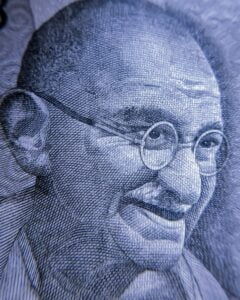Introduction
Indian society is a complex and diverse tapestry of various concepts and institutions that shape its structure and functioning. From the ancient caste system to the modern-day agrarian classes, tribes, kinship patterns, and the influence of religion, each element plays a significant role in shaping the social fabric of the country.
Caste: Concept and Critique
Caste is a unique social institution that has been an integral part of Indian society for centuries. It is a hierarchical system of social stratification based on birth, occupation, and social status. The concept of caste assigns individuals to specific social groups, known as varnas, which determine their rights, duties, and privileges.
While caste has played a crucial role in maintaining social order and division of labor, it has also faced criticism for perpetuating inequality, discrimination, and social exclusion. The rigid nature of the caste system has hindered social mobility and restricted opportunities for individuals belonging to lower castes.
Agrarian Classes
A significant portion of Indian society is dependent on agriculture as their primary source of livelihood. The agrarian classes consist of farmers, agricultural laborers, and related occupations. These classes are spread across rural areas and contribute to the agricultural sector’s growth and development.
The agrarian classes face various challenges, including land distribution, access to credit and resources, and fluctuating market conditions. The government has implemented several policies and programs to address these issues and uplift the conditions of the agrarian classes.
Tribe: Profile and Location
Tribes, also known as Adivasis, are indigenous communities that have their distinct cultural, linguistic, and social practices. They reside in various regions of India, primarily in forested areas and hilly terrains. These tribes have a unique relationship with their natural surroundings and have traditionally practiced sustainable ways of living.
However, tribal communities often face marginalization, displacement, and exploitation due to factors such as land encroachment, resource extraction, and lack of access to basic amenities. Efforts are being made by the government and non-governmental organizations to protect their rights, preserve their cultural heritage, and improve their socio-economic conditions.
Kinship: Principle and Pattern
Kinship refers to the social relationships and bonds formed through marriage, descent, and family ties. In Indian society, kinship plays a vital role in determining social roles, obligations, and inheritance patterns. The principle of kinship is based on the idea of extended families and the importance of maintaining strong social connections.
The patterns of kinship in India vary across different regions and communities. While some follow a patrilineal system, where descent and inheritance are traced through the male line, others practice matrilineal or bilateral systems. Kinship networks provide support, social cohesion, and a sense of identity within Indian society.
Religion and Society
Religion has a profound influence on Indian society, with diverse religious beliefs and practices coexisting harmoniously. Hinduism, Islam, Christianity, Sikhism, Buddhism, and Jainism are among the major religions followed in the country. Each religion has its unique rituals, customs, and traditions that shape the social and cultural fabric of the respective communities.
Religious institutions play a crucial role in providing social welfare, education, and healthcare services to the society. However, religious tensions and conflicts have also occurred at times, highlighting the need for interfaith dialogue, understanding, and respect.
Conclusion
Indian society is a rich tapestry of concepts and institutions that shape its structure and functioning. Understanding and critically analyzing these elements, such as caste, agrarian classes, tribes, kinship, and the influence of religion, is essential to comprehend the complexities and dynamics of Indian society. By addressing the challenges and working towards social inclusion and equality, Indian society can continue to evolve and progress.






















+ There are no comments
Add yours